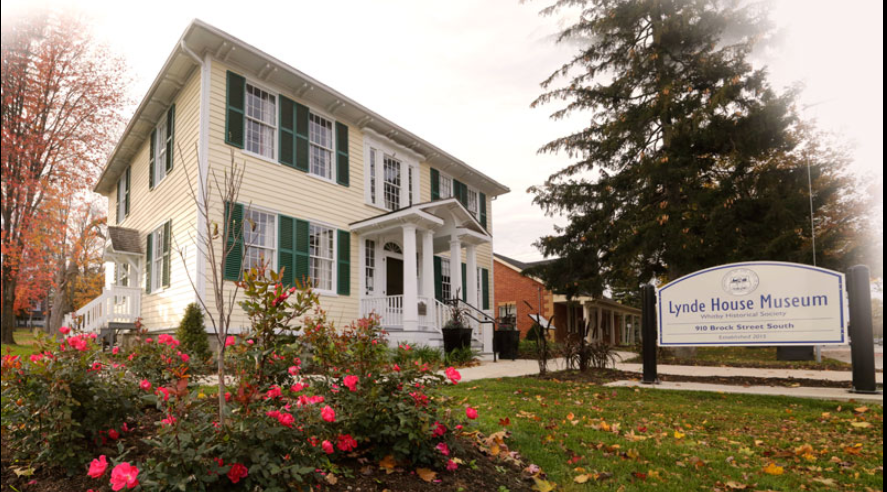War of 1812 veteran may be honoured 200 years later in Ajax
Published April 1, 2024 at 5:17 pm

Jabez Lynde, a veteran of the War of 1812 and prominent Durham resident, may be honoured in Ajax.
Lynde will receive a plaque from the Graveside Project, an effort by the Historic Military Establishment of Upper Canada re-enactment group to spread awareness about the conflict between British Upper Canada and the young United States.
Tensions between the British Empire and the United States had been high for years following the American War of Independence. The origins of the War of 1812 were myriad and complex and historians have credited numerous motivations to the conflict.
Many credit British marine restrictions, an American desire to annex Canada and tensions surrounding Tecumseh’s confederacy, among other reasons for the war. President James Madison formally began the war in June 1812 and launched an invasion into Canada, thinking his state militias would quickly take over.
Meanwhile, the war pulled Lynde into the conflict ironically, to defend his new home against his old one. According to a report to be presented to Ajax Town Council, Lynde was born in Brookfield, Massachusetts in 1773 and married Clarissa Woodruff in Connecticut in 1796.
At this time, the Lieutenant Governor of Upper Canada, then Peter Hunter, had advertised free land for Loyalist settlers. Lynde and his father-in-law took up the offer and headed to modern-day Pickering to build a home. Lynde himself bought land in Whitby and built the Lynde House by 1804 which still stands.
The family was among the first settlers in town and the Lynde House is now Whitby’s oldest building. The family stayed in the Georgian-style home until 1893. It has since been moved twice and now sits at a permanent home on 900 Brock Street South as a museum.
By 1806, Lynde had become the “pathmaster” of both Pickering and Whitby. (Ajax would not be founded until the Second World War.) In this role, he was responsible for maintaining the towns’ roads.
During his time in this role, Madison signed off on the war. Lynde swore his allegiance to King George III and forsook his American birthright. The Lynde home, then on Kingston Road, was converted into an inn and tavern. It became a frequent stop for military forces as the strategic halfway point between York and Kingston. The home also served as a spot for fresh horses and a medical facility.
One of the war’s most famous figures, Major General Isaac Brock, stayed at the Lynde House in February 1812. While many at the time believed war could be averted, Brock was not convinced. During this time, he was busy preparing militias for an impending invasion.
Brock’s efforts proved successful early in the war countering the invasion at Fort Mackinac and Detroit, alongside Shawnee leader Tecumseh. However, Brock himself would not survive the war. He was shot down during the Battle of Queenston Heights, near Niagara-on-the-Lake, the following October.
Shortly after Brock’s visit, Lynde was conscripted into the war effort as a Private in the York Militia. Despite Brock’s early victories, the Americans pressed on and seized York (now Toronto) in April 1813.
The Canadian forces were forced to retreat to Kingston, stopping at the Lynde House on the way. Retreating soldiers, sacked the home’s liquor supply on the way through even though doctors had requested Lynde keep it for medicinal use.
Following the sack of York, American forces continued to push the Canadians back. For a time, the British hold on Upper Canada almost collapsed and they had abandoned several posts in Niagara Region, retreating to the Burlington area. The Canadians pushed back, however, and were able to route the Americans during the Battle of Stoney Creek.
Following this win, the Six Nations of the Grand River arrived to back up the British. In nearby Beaver Dams, Laura Secord warned the British forces of an impending American attack. The Canadians again routed the Americans here and ended the invasion.
As American forces retreated they burned Newark (now NotL) and fled. The Canadians responded by entering the United States and burning Lewiston and Buffalo in December 1813. The next spring, the Americans tried to push into Niagara again. However, the British had just ended their war with Napoleonic France and now had renewed resources to spend in North America.
The war entered its bloodiest phase at this point with the brutal Battle of Lundy’s Lane and a prolonged siege at Fort Erie. Later, British forces entered the United States from the other end of Lake Ontario. The initial push resulted in a major battle in Lake Champlain.
New Lieutenant Governor George Prévost pushed the British forces into battle prematurely resulting in a crushing defeat. He was later court-martialled for this failure but died before the verdict.
Around this time, the British Navy attacked Chesapeake Bay and occupied Maine. From there, they advanced to Washington D.C. They took the capital as much of the American government fled to Virginia. The British set fire to much of the city including the White House and the Capitol Building.
By August 1814, both sides were negotiating peace in Ghent, Belgium as fighting continued in North America. Despite wary attitudes and early conflicts, the side ultimately came to a peace agreement in December. The agreement effectively restored the pre-war status quo.
However, there were some changes. With Tecumseh’s death the year before, his confederacy fell apart. Canada and the United States would later absorb the land. Additionally, the British refused to return any escaped or rescued slaves to the Americans and settled them free in Nova Scotia and New Brunswick.
With the war over Lynde ultimately completely rebuilt his house in its current Georgian style. He remained a military dispatcher and he and his son Sylvester took messages to Oshawa’s Farewell’s Tavern.
Clarissa Lynde later joined the Society of Friends (otherwise known as Quakers) in 1817 and regularly attended meetings in Pickering. Ultimately, the Lyndes left the tavern business, likely as a result of Quakers’ teetotalism.
However, the Quakers suffered an ideological schism in 1828, and Clarissa was ousted from the Orthodox meetings. She instead joined the rival Hicksite group and attended their meeting until she died in 1830 at age 56.
Jabez Lynde continued to live in the Lynde house until his death at age 85 in 1856. He’s buried in the Ajax Hicksite-Brown Cemetery where the Graveside Project may be installed in his honour if approved. Since his death the Lynde name has adorned Lynde Creek, Lynde Shores Conservation Area, Lynde Creek Village and West Lynde Public School.
The Graveside Project wrote, “The graves of veterans of the War of 1812 have never been recognized nationally and by doing so, we will bring an awareness of this time in our history to light in communities that have no other link to the War of 1812.” The effort has so far memorialized more than 400 veterans of the War of 1812 and hopes to one day build a historical database of all of them.
Ajax will first hear the application to put up the Lynde plaque in a Heritage Committee meeting on April 3, ahead of the monthly general Council Meeting. If approved the Graveside Project will supply the plaque though the town would be responsible for putting it up.
The installation, if approved, will coincide with the restoration of the Hicksite-Brown Cemetery
INdurham's Editorial Standards and Policies




